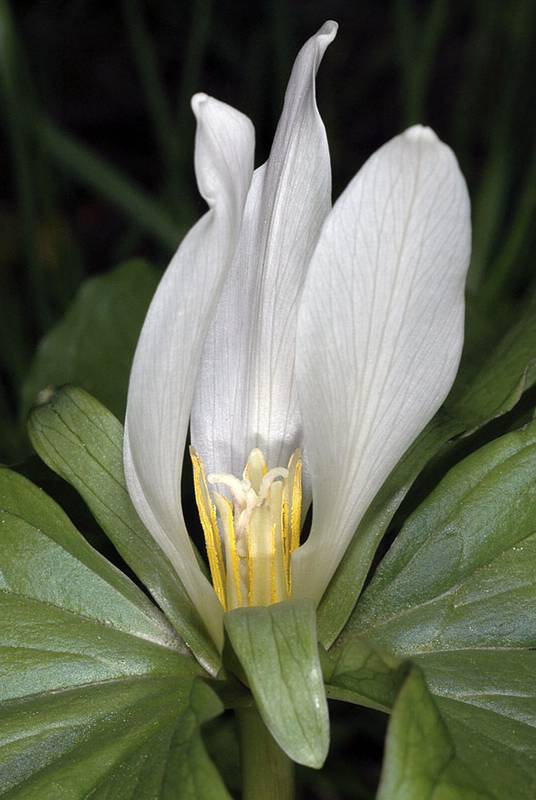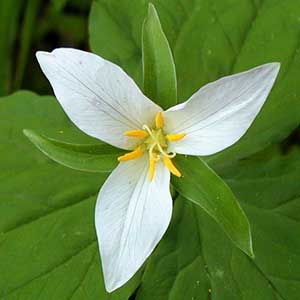Trillium albidum
Trillium ovatum
giant trillium, sessile trillium
trillium, white trillium, western wake-robin
Leaves 3, whorled, extending outwards past flower, sessile, 7-20 cm long and 12-15 cm wide, generally ovate, apex rounded to obtuse, green, sometimes with brown or purple tinged spots.
Leaves usually 3, whorled, at the top of an otherwise naked stem;
leaves not mottled, sub-sessile, broadly ovate to deltoid-obovate, 5-15 cm. long and broad, pointed.
Flowers 1, sessile;
sepals 3, free, persistent, green, spreading, 3-6.5 cm, lanceolate;
petals 3, erect to ascending, free, withering, white to slightly pale pinkish, base sometimes purple;
stamens 6, 15-25 mm, tissue between anther sacs greenish;
ovary greenish to purplish, 3-chambered;
styles 3.
Flowers solitary, stalked, the peduncle 2-8 cm. long;
sepals 3, green, narrowly oblong, 1.5-6 cm. long;
petals 3, white, longer than the sepals and much wider;
stamens 6, filaments 3-6 mm. long, anthers 6-14 mm. long, cream colored.
Berry-like capsule, green to purplish green, pulpy and juicy; seeds, many, ovoid.
Fruit a fleshy capsule, yellowish, slightly winged.
Trillium albidum
Trillium ovatum
- Local floras:
BC,
CA,
OR,
WA
- Local Web sites:
CalFlora,
CalPhotos,
Flora NW,
PNW Herbaria,
Turner Photog.
WildflowerSearch
iNaturalist (observations)
USDA Plants Database
- LBJ Wildflower Center
- SEINet
- Plants of the World Online
- Encyclopedia of Life
- Wikipedia
- Google Image Search



